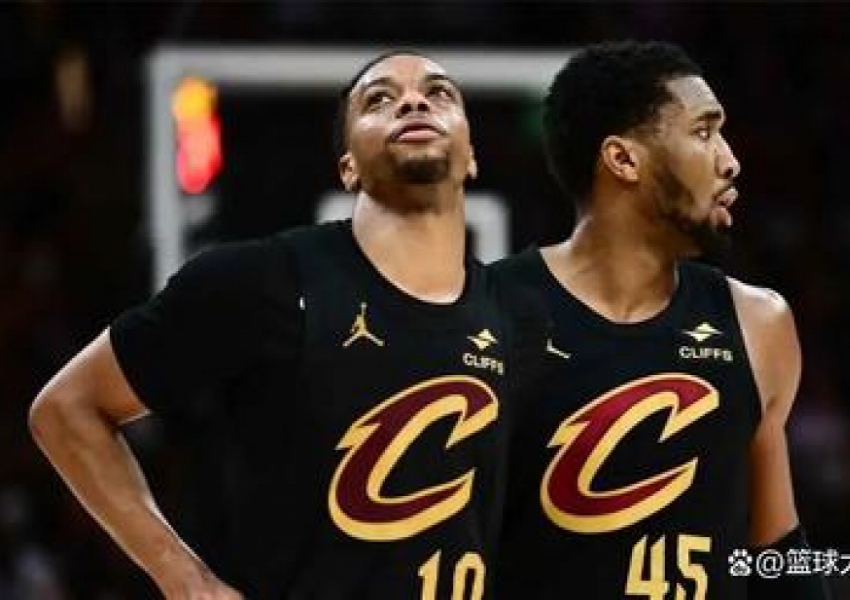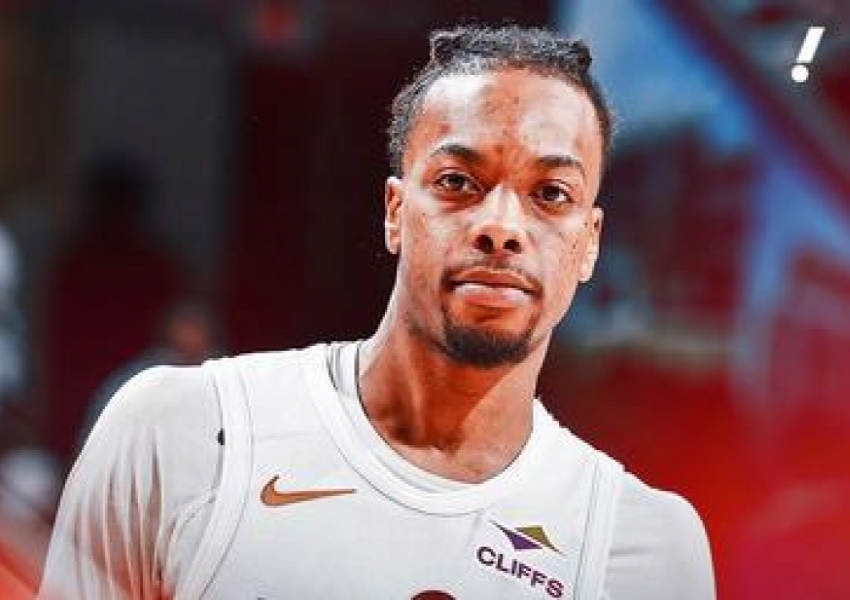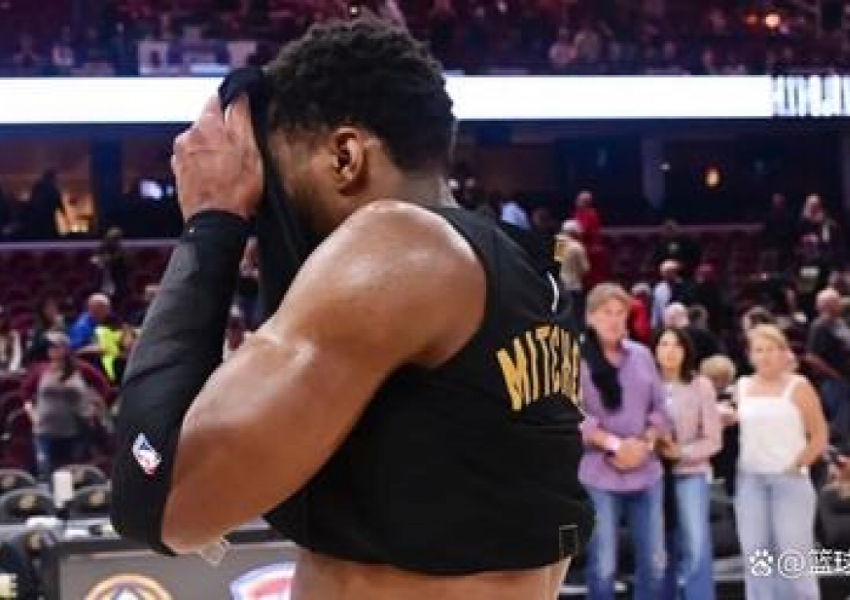Trade Countdown? Just How Bad Was Darius Garland in the Playoffs?
The Cleveland Cavaliers walked into the Eastern Conference Semifinals with confidence, fresh off a dominating first-round sweep of the Miami Heat. Their three-point shooting was electric, their defense locked in, and Donovan Mitchell looked every bit like a top-five playoff performer. But what followed was a stunning five-game collapse to the Indiana Pacers—a young, fast, and relentless squad that simply wanted it more.

As the dust settles, all eyes are turning toward one name: Darius Garland. The former All-Star point guard, once viewed as one half of Cleveland’s dynamic future alongside Mitchell, put together a postseason that was, in a word, disastrous. And with the Cavaliers facing a tough offseason full of questions and pressure to evolve beyond early playoff exits, Garland may find himself on the trade block sooner than later.

A Series to Forget
Let’s start with the numbers, because they paint a brutal picture. Garland played in five games during the 2025 playoffs, missing one in the first round due to a lingering toe injury. But when he was on the floor, the Cavaliers might’ve been better off if he wasn’t.

Against the Pacers, Garland averaged just 14.0 points per game. His field-goal percentage? An icy 33.3%. From three-point range? An even colder 16.7%. His assist-to-turnover ratio cratered, with 4.0 turnovers per game and only a modest 5.2 assists across both series. If you're looking for a point guard to steady the ship and create offense when things get tight, Garland not only failed to deliver—he actively made things worse.
Perhaps most damning is the advanced data. Defensively, he was a liability in every sense. According to NBA tracking metrics, opponents shot 20.5% better from the field and 22.8% better from three when Garland was the primary defender. That’s not just bad—that’s malpractice on a playoff court.
And then there was Game 5. Facing elimination at home, Garland went 4-of-16 from the field and 0-of-6 from three. He had five turnovers and a -18 plus-minus, the worst on the team. Max Strus also laid an egg with a scoreless outing, but at least he was guarding up and doing the little things. Garland, meanwhile, was hunted on switches and hemorrhaged points on one end while offering no efficiency or creation on the other.
This wasn’t a one-off game. This was a trend. A postseason pattern that has to concern Cavs leadership.
Donovan Mitchell Deserved Better
If anyone should be furious after this series, it’s Donovan Mitchell.
Say what you want about his inefficiency in spurts, or his fatigue late in games, but Mitchell carried Cleveland in this series. Through five games, he averaged 34.2 points, including two 40-point explosions. Game 5 alone was a war: 35 points, 9 rebounds, 4 steals, and 21 trips to the free-throw line. He even buried a late-game three immediately after bricking all three free throws on a previous possession—just pure willpower.
And what did he get for it? A four-to-one gentleman’s sweep loss and a supporting cast that left him isolated and overwhelmed in crunch time.
It’s the same story we’ve seen before. In Utah, Mitchell was the offensive engine, often surrounded by players who couldn’t create their own shots. Now in Cleveland, it’s déjà vu—but this time, with a partner who was supposed to help share the load, not add to it.
The Pacers’ Pressure-Cooker Defense
Credit where it’s due: the Indiana Pacers were phenomenal. Led by Tyrese Haliburton’s 31-point masterpiece in Game 5 and a cast of perfectly-fitting role players—Siakam, Turner, Nembhard, Nesmith—they ran circles around Cleveland.
Head coach Rick Carlisle and his staff implemented a full-court press, 48-minute on-ball pressure system that felt more like a March Madness gauntlet than an NBA playoff series. Veteran coach Kenny Atkinson compared the Pacers’ approach to a high-intensity college team. That’s exactly how it felt.
The Cavaliers weren’t just out-shot. They were out-toughed, out-thought, and, most importantly, out-worked. And Garland, as the team’s primary ball-handler, bore the brunt of that relentless defense. He couldn’t initiate sets. He couldn’t find driving lanes. He couldn’t even get the ball past half-court comfortably at times.
Against an aggressive scheme, Garland looked like a deer in headlights. The playoff speed exposed every crack in his game.
A Broken Backcourt?
The Mitchell-Garland backcourt was once billed as Cleveland’s answer to the league’s growing emphasis on offense-heavy guard duos. But playoff basketball is different. It emphasizes size, switchability, and defensive flexibility. Garland and Mitchell, generously listed at 6’1” and 6’3” respectively, are simply too small to survive together defensively when the lights get bright.
You can’t hide both guards. And if one isn’t producing offensively, that’s a fatal flaw.
Garland’s regular season was impressive—he returned to All-Star form with improved efficiency and command—but the playoffs revealed the hard truth. This duo, as talented as they are individually, may have hit its ceiling. Winning 60+ games in the regular season is one thing. Surviving a seven-game dogfight in May is another.
The Cavaliers might need to make a call that shakes the foundation of their franchise: split the backcourt. Keep the proven playoff performer in Mitchell, and move Garland for assets that better complement Mitchell’s skillset and timeline.
Trade Talks Incoming?
So where does that leave Cleveland?
If this series did anything, it made one thing crystal clear: the Cavaliers are built for the regular season, not the playoffs. A roster overhaul isn't mandatory, but strategic realignment is.
Start with size on the perimeter. Add defensive versatility. Raise the team’s playoff IQ.
And that likely means entertaining offers for Darius Garland.
He’s still just 25 years old. He’s under contract through 2028. He has a clean medical record, a high basketball IQ, and a polished offensive game that could thrive in the right system. There will be no shortage of suitors. Teams like the Orlando Magic, San Antonio Spurs, or even the Brooklyn Nets could view Garland as a franchise centerpiece.
The Cavaliers don’t need to sell low—but they do need to sell smart.
A Star Crossed with Timing
There’s a bittersweet element to this story. Garland’s rise in Cleveland coincided with a transition from rebuild to contention. He blossomed into an All-Star, helped re-energize a storied franchise, and carried a significant burden during a time of growth. But basketball—like life—is about timing. And Garland’s may simply not align with the Cavaliers’ next step.
Sometimes it’s not about how good you are. It’s about how well you fit when it matters most.
Darius Garland is not a bad player. He’s not a bust. But in the crucible of playoff basketball, he was exposed—and that exposure may spell the end of his time in Cleveland.
As the clock ticks toward offseason decisions, one thing is clear: trade season is coming. And Garland’s name might be the first one on the block.
点评:
You can’t hide in the playoffs. That’s where flaws become fatal, and excuses don’t matter. Darius Garland is talented, but talent isn’t enough when the pressure cooks. If the Cavaliers are serious about contending in the East, they need to reimagine their foundation. And sometimes, that starts with making the hardest call of all: letting go of a homegrown star.
Copyright Statement:
Author: focusnba
Source: FocusNBA
The copyright of this article belongs to the author. Reproduction is not allowed without permission.
Recommended Blog
- Four Flat-Out Duds: Just How Good Is Jalen Williams in Round Two?
- Is Houston the Next Home for Giannis? With Sengun on the Table, Rockets Are All-In
- The Clock Is Ticking: Just How Bad Has Porziņģis Been in the Playoffs?
- Didn't Rise to the Moment: Just How Good Was Jimmy Butler in the Playoffs?
- Daishen Nix: From Nation’s Top Point Guard to NBA Afterthought
- From Rock Bottom to the Backbone of a Dynasty: The Inspirational Journey of Shaun Livingston
- Teaming Up with Wemby? Could Giannis Antetokounmpo's Next Chapter Begin in San Antonio?
- 21 PPG & Dominating Luka: How Jaden McDaniels Exposed the Lakers' Fatal Flaw
- Denver in Crisis: Porter & Westbrook Injuries Leave Jokić Carrying a Broken Contender
- The Nigerian Nightmare: Josh Okogie's Relentless Journey From Lagos to the NBA